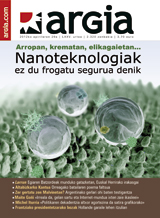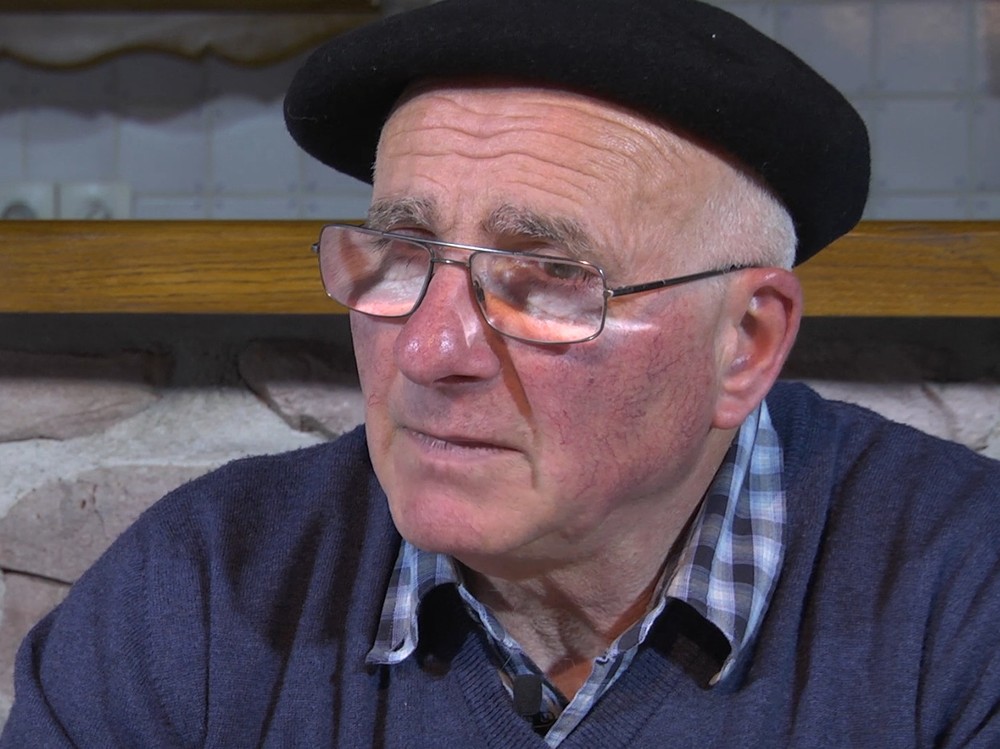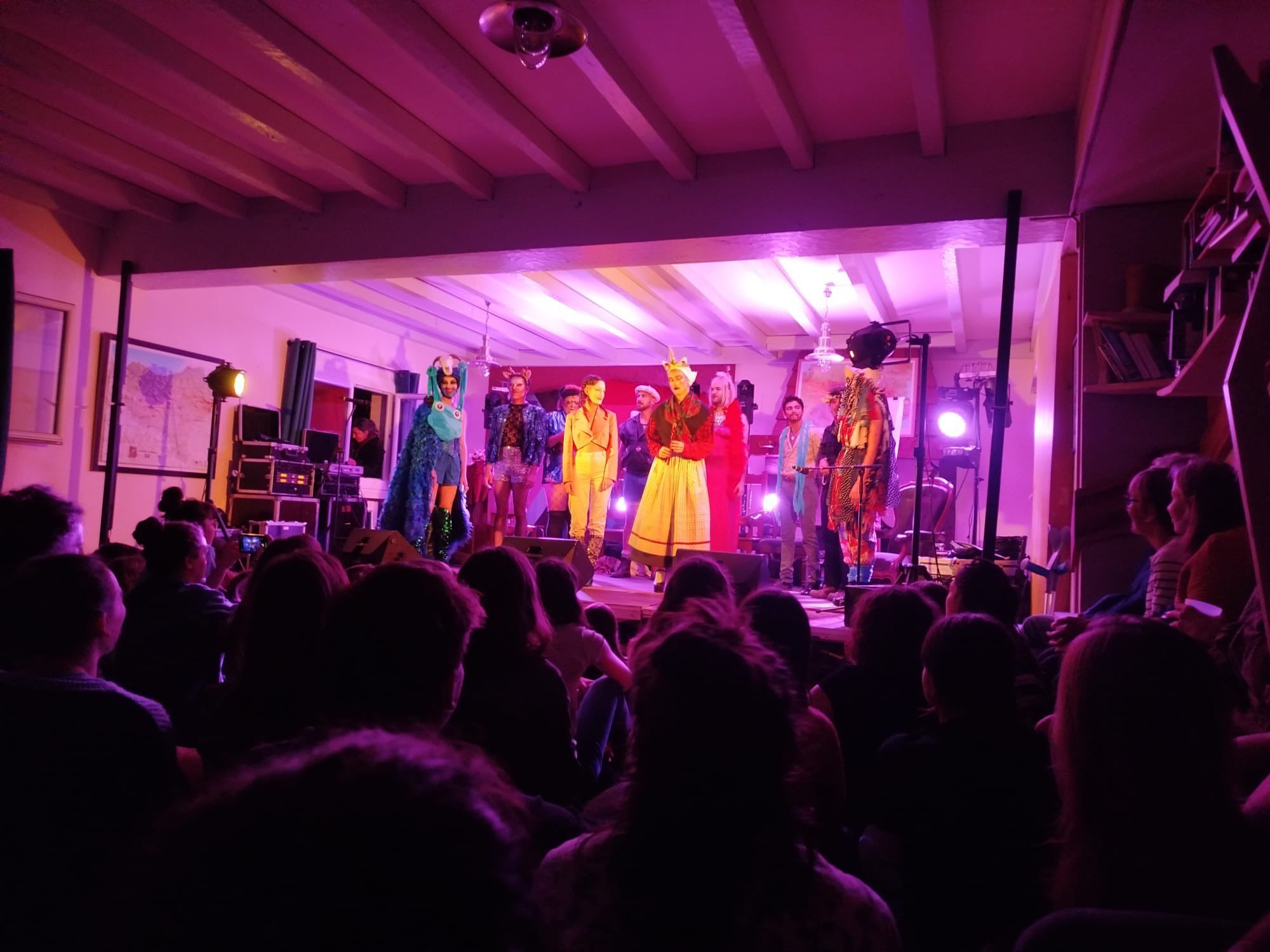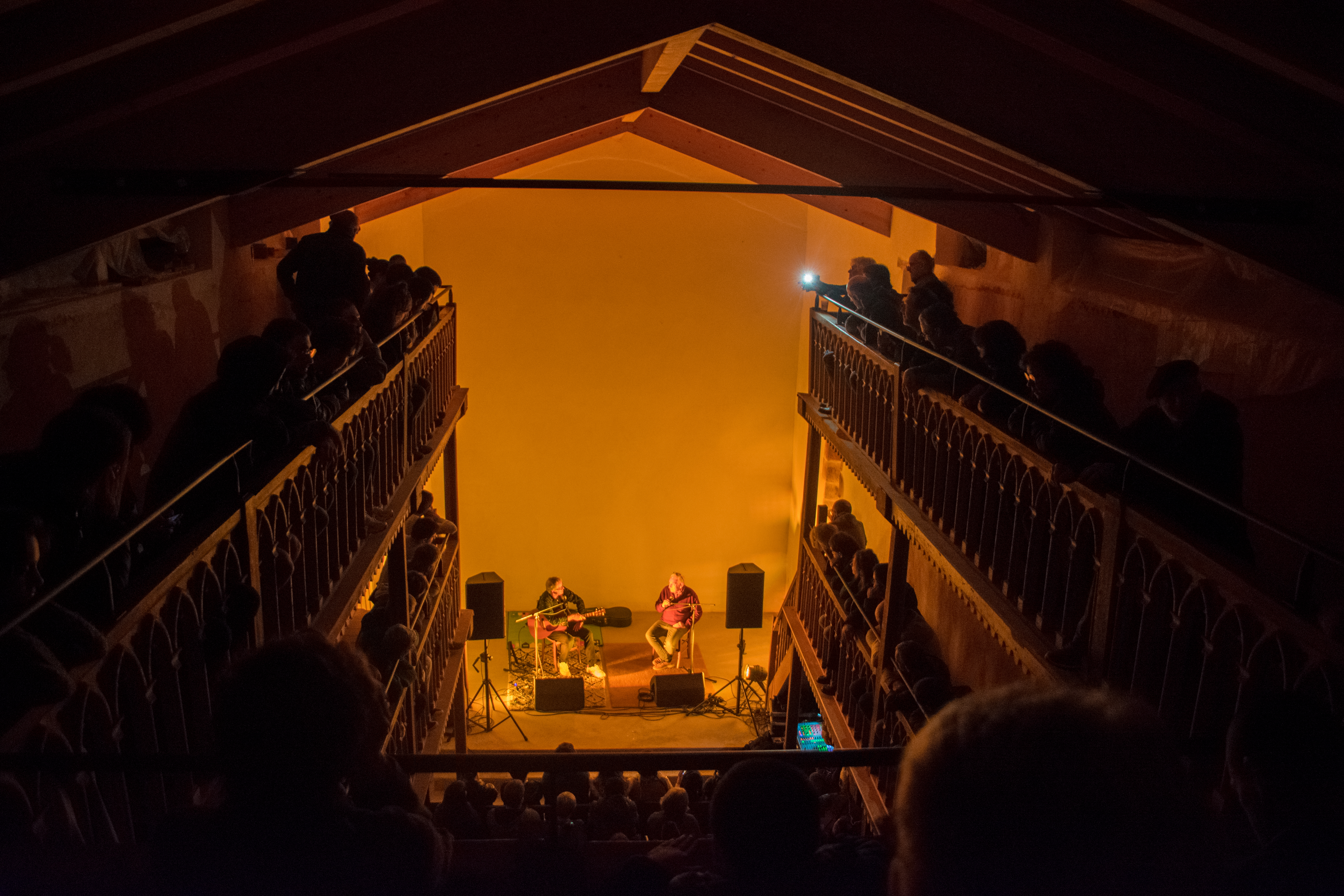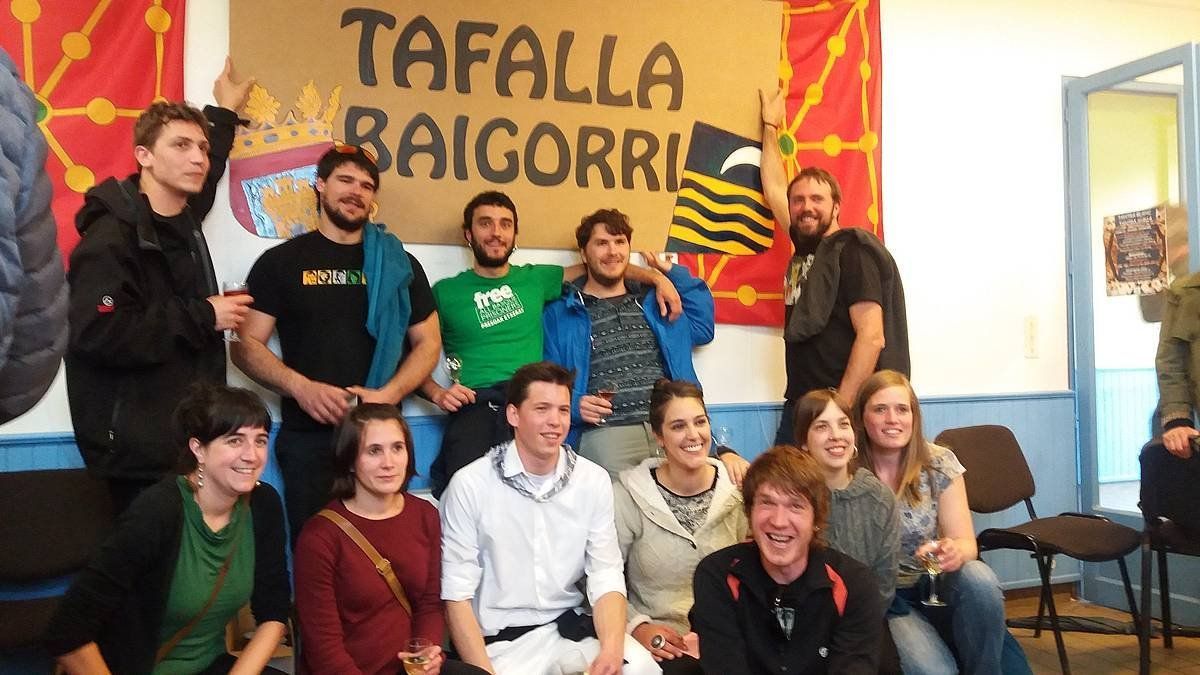Jerusalem on the Adour Shore
- By removing the family tree and discovering in that Aiherra of 1643 a Jacob with our name, we dream of the first excuse of the stretch. We have imagined ourselves more and more stubborn. That is not the case, of course. From the name we become members of the plural history of this territory, from here, from there, from no other and we take the path of investigating the fate of the Basque Jews through Baiona, Bastida and Bidaxun.
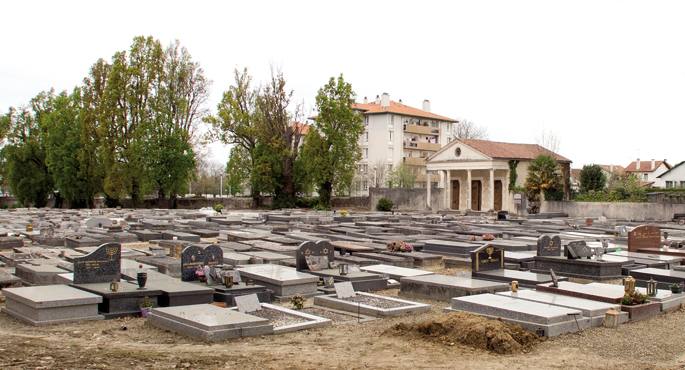
In 1492 the king of Spain expelled the Jews to Portugal. Six years later, the queen of Lusitania, with the same resolution, became Catholic by force, that is, the Marranes and Conversos lines, and forced them to compete in the countries of the northern hospital. The Israelis had been especially rooted in Álava and Navarre since the 10th century in the Basque Country. The communities of Tudela or Pamplona were paying the very serious taxes of Pecha. In Balmaseda there was also a group. In addition to the fury of the Inquisition, they were occasionally able to withstand pogroms such as the murder of 10,000 Jews in Estella and the Bank in 1328. The thinker Ha Levi and the walker Benjamin de Tudela were members of the Navarra culture. In 1994 the Government of Navarra published this illustrative book in three languages, Xabier Kintana in Basque.
In the 15th century, the sepharad Jews began to settle in Baiona, extending to Peirorade, Bastida and Bidaxun, witnesses to the cemeteries that today are admired in every city. In the foothills of the village we can see the gray, smooth and humbly lying on the grass, the surnames, the fragrances gathered from the places, incite us to silence. As if we were in Vienna, in Frankfurt or in the Judische Friedhof in Berlin. Pride, fear and grief are mixed up, images of various burnt offerings that remember that living beings can become intolerant if politicians continue to stigmatize the faith of our Protestant friends. The Jews had long been excluded from the sacred pit spoken by Inspector Zizek. The legend of the Israelis in the Northern Basque Country was not so harsh, although for centuries snakes of prohibition and humiliation were devoured.
From 1536 onwards, the Jews settled in the vicinity of Maubec Street in the Holy Spirit district. The well-known Portuguese traders brought chocolate and tobacco. The Jewish name first appeared in the roles of Baiona in 1614 for the Holy Spirit. Until then, they practiced the rite sheltered from private houses with mivé and maintained good relations with the priests of the parish of Santesteban. They left them funds for the construction of the synagogue and cemetery in the upper part of Maubec, and later in the area that now extends, in the shadow of the ZUP. The diversion of the River Aturri made the Jews of Baiona more comfortable with the diasporas of Spain, Portugal and Amsterdam, exchanging fabrics, fish, olive oil and chocolate. The documents stress that Christian and Jewish traffickers were perfectly coordinated. It was, in that holy spirit, the small Jerusalem on the shore of the Adour.
But it wasn't an entirely ideal situation. In the 18th century the notaries of Baiona denied the owners of Jewish shops the rooting in the city accusing them of contaminating a cleaning as religious as an unjust concurrence. The production of chocolate and tobacco needed only Catholics. On the other hand, at night, it was punishable by a fine and a prison sentence, not being able to attack the bridge, finding the Israeli in Baiona. By 1760 there were 3,000 Jews in the Holy Spirit. The Bidaxun and Labastida fades for the time being, because people preferred city and citizenship. Names of Portuguese origin of the stones are left: With the violins Azoulai, Dalmeyda, Furtado, Nunes, Abraham, Esther, Jakob or Rebecca. However, after two or three generations, the names of Christians were abandoned at another time to follow the custom.
Memory Fingerprint
In 2004, journalist Anne-Marie Galé published a fascinating 52-minute documentary on the history of the Jews in Iparralde. Apart from the spectacular treasures of the Special Hall of the Synagogue, the Cemetery and the Basque Centre that can be visited in the Afternoons of Goodness, here the memory has almost been erased. The books hardly mention the fertile neighbourhood of five or six centuries. The theme is of great interest to discover the cemetery that opens to the castle in a feed of Bidaxune or to reach the countryside where the slabs are rested excavating in the streets of the Basda of Navarro style. It is clear that the search for the footprints of this story is a deep search for oneself.
The stately house of Bidaxune enjoyed sovereignty in the limits of the kingdom of Navarre from 1570 until almost the eve of the French revolution. The Agaramontes provided the Portuguese merchants with the bed and in 1665 the opening of the cemetery. It was used until the Bidaxune Jews dispersed. They show up about a hundred slabs. Taking advantage of the same political shadow, the Jews remained in Labastida for two hundred years. The oldest writing of the cemetery dates from 1620 and the most recent from 1785. Days of death are carved according to the Hebrew calendar. The Labastida cemetery, as well as the Bidaxun cemetery, is already in possession of the Baiona Consistory. Let us not forget that in 1904 Lazare Poliakov raised the synagogue in Biarritz. The great rabbi of Baiona, Emil Levy, made the speech of the first. In addition to hosting round torah, Baiona manages the synagogue that today renews. In Biarritz, the rite was and is like half-baked, ashkenaze and shaded. The sacred arch and some of the furniture came from the sale of the synagogue of Peirorad in 1898.
Baiona synagogue
In number 35 of Maubec Street a temple was built in 1837 that would gather the oratories and the Mivés dispersed in the courtyards of private houses. However, the Jews of the Basque Country had a special ritual, above all, because of their many and varied backgrounds. The Jews of Baiona, together with those of Bordeaux, were the first to obtain French citizenship in the Revolution of 1789. The Portuguese merchants crossed the Adour and then settled in the city, while the Baiona Exchange was located in the Plaza de los Cinco Cantones. Furtado, Pereire, Da Silva, Salzedo, etc., were the promoters of economic and political life in the nineteenth century. Isaac Pereire gave money to get the train to Baiona and when Furtado was mayor, the Holy Spirit became a district of Baiona, bringing down the monumental stone bridge over the Adour. The Jews remained so in Maubec, near the fountain of the Republic Square and on the sidewalks of Jean d'Amou Street.
They were experienced bankers. Jules Gomes & Cie, for example, had a deal with customers from all over southern France, as well as from Spain and Portugal, rounding the networks prior to the exodus. Salzzo often crossed the rich Urkijo of Bilbao. Famous characters left Baiona: The family of René Cassin and Mendes France, President of the Council, received the Nobel Peace Prize in 1968. It may be worth remembering that Aviron was one of the most important founders of the Bayonnais, the Tavares of the Marquisat Mansion that relies on Jean d’Amou Street.
Nazi profanation
The 20th century was also hard for the Jews of the Basque Country. The quantities, as well as the bankers' businesses, decreased, with traders being limited to neighbouring transactions. On the eve of the Second World War, Baiona had 1,000 Jews on board. Many families were sent to Pau, in the area free from the arrival of the Germans. They were stripped of rights by the Government of Petáin, but on the part of the Bayoneses they were not subjected to violent acts of anti-Semitism, with exceptions. The Nazis desecrated the synagogue and used it as a stable. In the cemetery, swastikas were drawn. The rituals of the synagogue were hidden in the Basque Center. They are available to anyone who wants to. The fear and shame of those who passed the bridge of the Holy Spirit on the yellow star’s chest is still a reference point.
Deportations and wars began to form a group of sins beginning in 1962, the Jews of Algeria and Morocco. More peacefully they celebrate in the Shabbat synagogue, weddings and other celebrations. And on Saturdays, in Maubec, we can fire the rabbi of Baiona with the kippa in the head...
Nafarroa Beherean, Aiherrako 'Beltzegitea' etxean kokatuko da Eguzkilore haurtzain-etxe berria. Euskara, natura eta motrizitate librea oinarri harturik, heldu den apirilean hasiko dira zerbitzua eskaintzen.
When we woke up, culturally and administratively, the landscape showed a three-speed disaster.
As far as culture is concerned, I had the opportunity – once again – to confirm this last November 14 at the Mint library in Ortzaize. There we met because Eñaut Etxamendi... [+]
Baionan Loverdose eta Atharratzen Bekat’uros egin den bezala, Oztibarren (Nafarroa Beherea) Debrien Figurak feminismoaren eta transfeminismoaren inguruan antolatutako egunak arrakasta izan du.
Beware of that view of the South. Firstly, to demystify the blind admiration of the green land, the white houses and the red tiles, unconditional love, fetishism associated with speech and the supposed lifestyle. It leaves, as Ruper Ordorika has often heard, a tourist idea... [+]
Baigorri eta Tafalla herrien arteko senidetzea ospatuko dute asteburuan Baigorrin. 1978an hasi ziren lehen harremanak, baina hautetsien aldaketarekin pixka bat galdu zen ondotik. Haatik, duela hiru urte Tafallakoak berriz Baigorrira hurbildu ziren.
Larunbatean ospatu dituzte Ttinka mikro haurtzaindegiaren bost urteak Lakarran. Baxe Nafarroko euskara hutsezko egitura bakarra da, Euskararen Erakunde Publikoaren B ziurtagiriduna.









